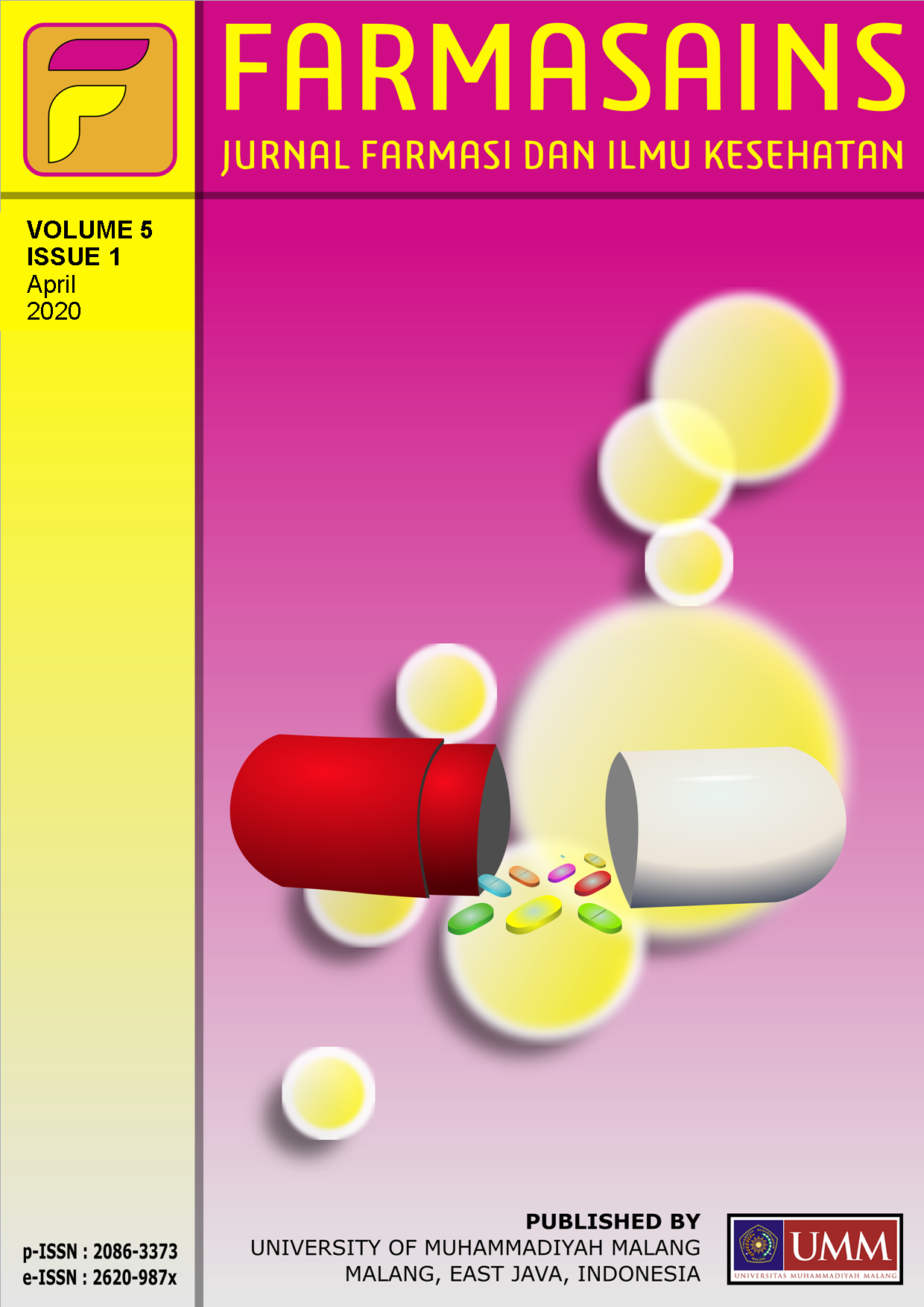The relationship of self-stigma with the quality of living people with HIV/AIDS (PLWHA) in WPA Turen District
DOI:
https://doi.org/10.22219/farmasains.v5i1.12657Keywords:
HIV/AIDS, PLWHA, Self stigma, Quality of lifeAbstract
Stigma is something that unacceptable or usually condescending and degrading. Stigma and discrimination cause inhibition of HIV/AIDS prevention and treatment in the community, thus impacting psychologically and decreasing the quality of life of PLWHA. To find out the relationship between self-stigma and the quality of life of people living with HIV/AIDS (PLWHA), a study in the AIDS Concerned Residents (ACR) District of Turen. It uses a correlational analytic design with a cross-sectional approach. The number of respondents is 22 PLWHA in Turen Concerned Residents (ACR), and methods of sampling in this study are using a purposive sampling technique. From 22 respondents, the result of self-stigma on PLWHA was low, with a percentage (54.5%) and the quality of life of PLWHA living in ACR Kec. Turn is excellent, with a percentage (54.5%). The results of statistical tests show that the value of p = 0.108 and the significance level of 0.05 also obtained p > 0.05, meaning that there is no significant relationship between self-stigma and the quality of life of PLWHA. This study shows that there is no significant relationship between self-stigma and the quality of life of PLWHA. With the existence of ACR, people and HIV-AIDS sufferers in Turen District have started to eliminate existing stigma and have a good quality of life.
Downloads
References
Bare, B., & Smeltzer, S (2005). Brunner & Suddarth’s: Texbook of Medical Surgical Nursing. Philadelphia, PA: Lippincot.
Campbell, C., Nair, Y., Maimane, S., & Sibiya, Z. (2005). Understanding and challenging HIV/AIDS stigma. Durban, South Africa: University of KwaZulu-Natal.
Degroote, S. D. V., & Vandijck, D. M. (2014). What Determines Health Related Quality of Life Among People Living With HIV: An Updated Review of the Literature. Archieves of Public Health, 72(40), 1-40. doi:10.1186/2049-3258-72-40
Dinas Kesehatan Kabupaten Malang. (2014). Laporan Tahunan Dinas Kesehatan Kabupaten Malang. Malang, Indonesia: Authors.
Fatmawati. (2016). Kualitas Hidup Orang dengan HIV/AIDS (ODHA) Berdasarkan Quality of Life (World Health Organisation Quality of Life- BREF) di Kota Semarang (Undergraduate Thesis). Stikes Ngudi Waluyo Ungaran, Semarang, Indonesia.
Hawa, M, T. (2014, Juny 18). Stigma Legal dan Etik Dalam Tatalaksana [Blog Post]. Retrieved from http://hivdanaidss.blogspot.com/2014/06/stigma-legal-dan-etik-dalam-tatalaksana.html
Kementerian Kesehatan Republik Indonesia. (2012). Buku Pedoman Penghapusan Stigma &. Deskriminasi Bagi Pengelola Program Petugas Layanan Kesehatan dan Kader. Jakarta, Indonesia: Authors.
Latifa, A., & Purwaningsih, S. S. (2016). Peran masyarakat madani dalam mengurangi stigma dan diskriminasi terhadap penderita HIV & AIDS. Jurnal Kependudukan Indonesia, 6(2), 51-76.
Paryati, T., Raksanagara, A. S., & Afriandi, I. (2012). Faktor-faktor yang mempengaruhi stigma dan Diskriminasi kepada ODHA (Orang dengan HIV/AIDS) Oleh petugas Kesehatan. Retrieved from http://pustaka.unpad.ac.id/wp-content/uploads/2013/02/Pustaka_unpad_Faktor_-Mempengaruhi_-Stigma_ODHApdf.pdf
Sasono, T. N. (2017). Peran Warga Peduli AIDS Cahaya Care Turen Dalam Meningkatkan Kualitas Hidup. Jurnal Kesehatan Mesencephalon, 3(1), 51-54. doi:10.36053/mesencephalon.v3i1.37
Simboh, F. K., Bidjuni, H., & Lolong, J. (2015). Hubungan Dukungan Keluarga Bagi Kualitas Hidup Orang dengan HIV/AIDS (ODHA) di Klinik VCT RSU Bethesda GMIM Tomohon. EJournal Keperawatan (e-Kp), 3(2).
Theofilou, P. (2016). Quality of Life: Definition and Measurement. Europe's Journal of Psychology, 1(9), 150-162. doi:10.5964/ejop.v9i1.337
Ventegodt, S., Merrick, J., & Andersen, N. J. (2003). Quality of life theory I. The IQOL theory: an integrative theory of the global quality of life concept. The Scientific World Journal, 3, 1030-1040. doi:10.1100/tsw.2003.82
Wati, N. S., Cahyo, K., & Indraswari, R. (2017). Pengaruh Peran Warga Peduli AIDS terhadap Perilaku Diskriminatif pada ODHA. Jurnal Kesehatan Masyarakat (e-Journal), 5(2), 198-204.
Widayati, N., & Murtaqib. (2016). Identifikasi Status Psikologis Sebagai Upaya Pengembangan Model Rehabilitasi Klien HIV/AIDS Berbasis Komunitas. NurseLine Journal, 1(1), 90-99.
World Health Organization [WHO]. (1997). The World Health Organization Quality Of Life. Geneva, Swiss: Authors.
Downloads
Published
How to Cite
Issue
Section
License
Authors who publish with this journal agree to the following terms:
a. Authors retain copyright and grant the journal right of first publication with the work simultaneously licensed under a Creative Commons Attribution License that allows others to share the work with an acknowledgement of the work's authorship and initial publication in this journal.
b. Authors are able to enter into separate, additional contractual arrangements for the non-exclusive distribution of the journal's published version of the work (e.g., post it to an institutional repository or publish it in a book), with an acknowledgement of its initial publication in this journal.
c. Authors are permitted and encouraged to post their work online (e.g., in institutional repositories or on their website) prior to and during the submission process, as it can lead to productive exchanges, as well as earlier and greater citation of published work (See The Effect of Open Access).













